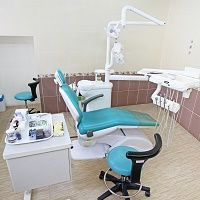Equipment and Design Have Positive Impact on Practice Efficiencies
Dentists are increasingly considering the look and feel of their offices. It turns out such considerations can also boost a practice's efficiency.

Lean manufacturing or lean production is a systematic method for the elimination of waste and improvement of productivity and quality. And yes, it’s traditionally thought of in a manufacturing context.
But those same concepts that are applied in a factory setting to reduce wasted time and motion can be applied in a dental practice. Unfortunately, according to Adrian LaTrace, CEO of Boyd Industries, a designer and manufacturer of specialty dental and medical operatory equipment, those concepts are often overlooked.
“Progressive designers are now incorporating these concepts, looking at creating adjacencies for supplies being close to the point of use, and where the patient will be located,” LaTrace says. “Design and layout can be one of the top things to facilitate the efficiencies within a practice.”
Personalizing a Practice
Boyd specializes in personalizing its products to a specific theme or style a dentist wants to create within his or her office. As LaTrace explains, the days of the old, clinical-looking office are going away. When patients walk into an office they’re looking for something that makes them feel comfortable. That means features like coffee bars and WiFi, but also the general aesthetics of the office.
“Especially as we see a new generation of dentists making they way into the industry, they are more image conscious,” LaTrace says. “The patient has choices. And given a choice of a practice that looks pretty stale and clinical in nature versus one that’s a much more comfortable environment to go to, odds are, they’re going to go with the one that looks more comforting and welcoming.”
There are also many efficiencies that design can bring about. For example, LaTrace says that the average orthodontist practice may see anywhere from 150 to 175 patients each day. And their overhead costs are among the highest in the dental field. The design of the office can create storage locations that are adjacent to the patient so there’s less wasted motion. Also, properly sizing of sterilization centers for the number of operatories so that there’s an optimal amount of instruments can result in added efficiencies.
“By creating a more efficient operation, they can reduce the amount of inventory, maybe even streamline the amount of staff they have per patient,” LaTrace says. “So there are ways [dentists] can enhance their profit margins by being more efficient.”
Technology Factor
Advances in technology are impacting the way dentists, orthodontists, and others practice. But it’s also impacting dental equipment. For example, advances in material science have resulted in surfaces with antimicrobial properties. This can benefit a practice in its infection control protocols by having a surface that will resist the growth of any bacteria or microbials.
“We’ve also incorporated technology into our chair products,” LaTrace says.
Specifically, programmable settings much like those in a car can help automatically articulate the optimal setting for a hygienist who’s five-foot-two or a dentist who’s six-foot-four.
“It’s not a leading edge concept or idea,” LaTrace admits. “We’ve had it in the auto industry for a number of years. But it is relatively new to the dental space.”
Getting Started
Whether you’ve decided to refurbish your existing practice, or have merged with or purchased a second location, LaTrace says the first step with regard to design and equipment is to have an expectation of the size of the practice.
“Once you start putting up walls, it’s difficult and expensive to expand,” he says.
That can be challenging, of course, especially when a dentist is starting out in a new practice. There are big expectations, but LaTrace cautions to step back and take a rational calculation on how many patients you realistically expect to see. Even for an existing facility, design architects can help redesign the existing footprint to meet the anticipated capacity.
“And one other thing they need to think about is branding,” LaTrace adds.
He calls them “serial practices” where one facility after another is built, and stresses the importance of how each location has the same look and general feel, right down to the layout.
“We work with doctors who are doing this,” LaTrace says. “It gets back to efficiencies. You can go from one office to another and the equipment is the same.”
He says that a doctor and his or her equipment is very much like a musician with an instrument. When a pianist plays, they don’t sit and look at the keyboard. They know where the keys are, and they can focus on their audience. Focus on their music.
“We see this a lot in the oral surgery space,” LaTrace says. “They can focus on the patient. Focus on the procedure. That’s important, and should be thought of before breaking ground.”
ACTIVA BioACTIVE Bulk Flow Marks Pulpdent’s First Major Product Release in 4 Years
December 12th 2024Next-generation bulk-fill dental restorative raises the standard of care for bulk-fill procedures by providing natural remineralization support, while also overcoming current bulk-fill limitations.